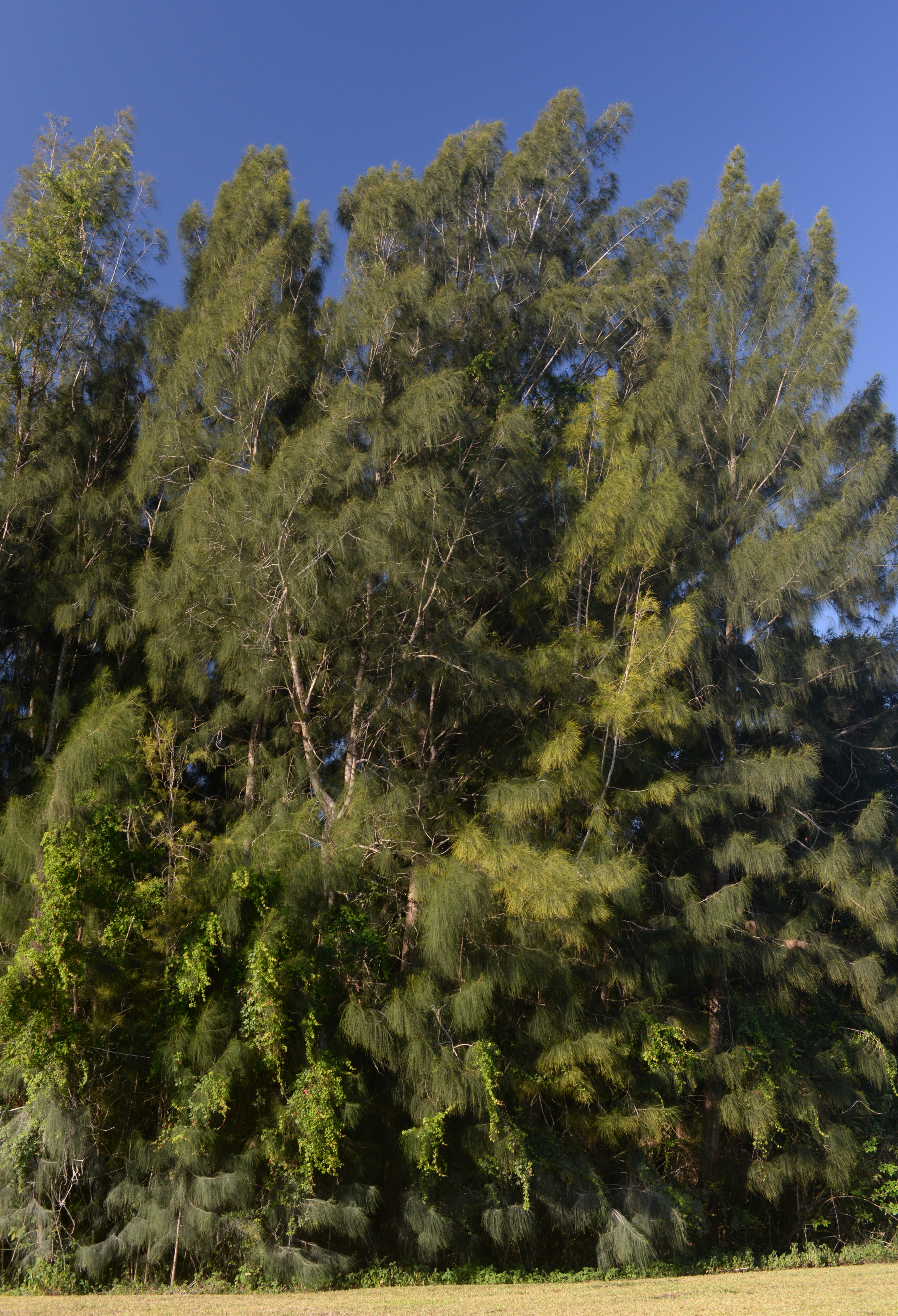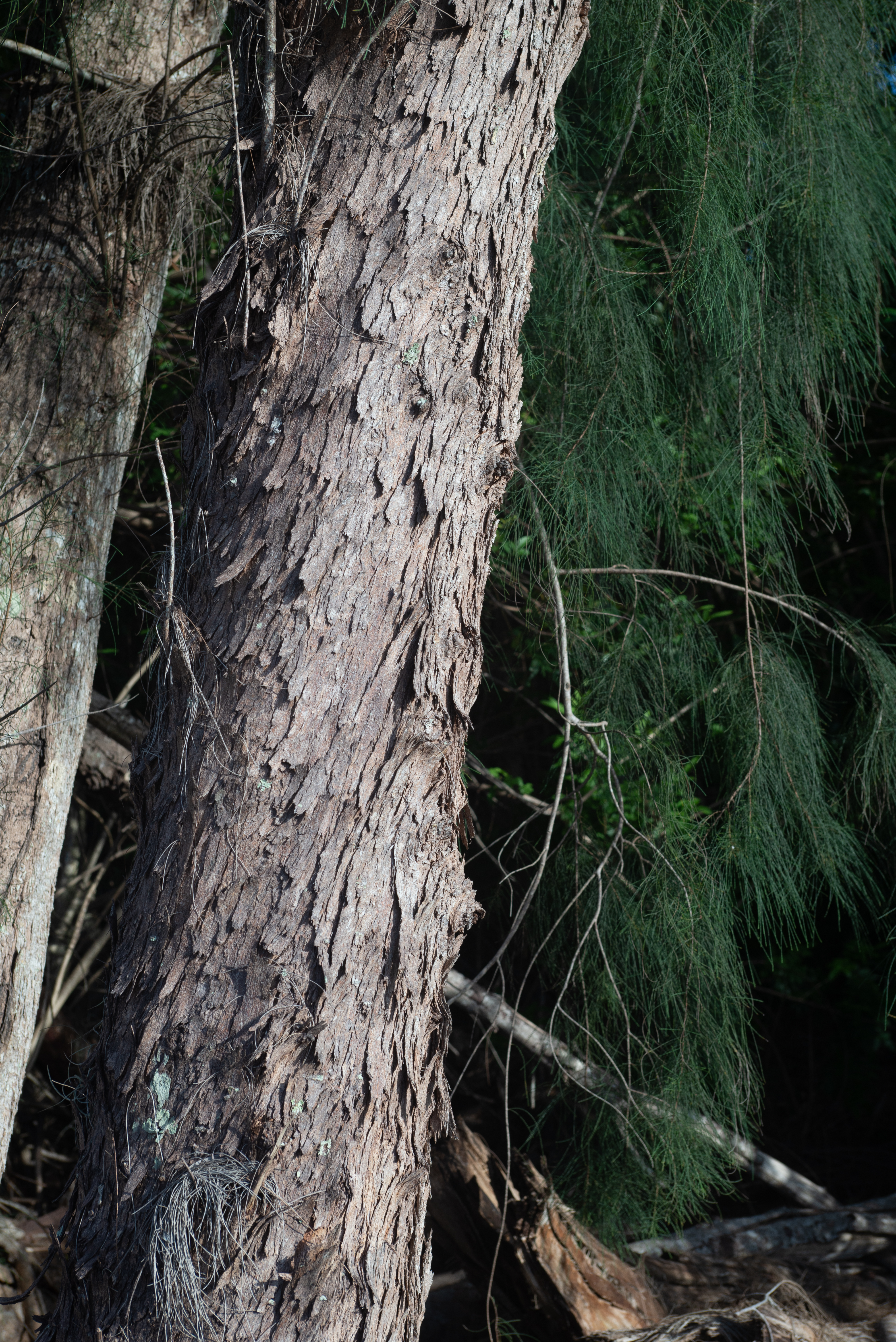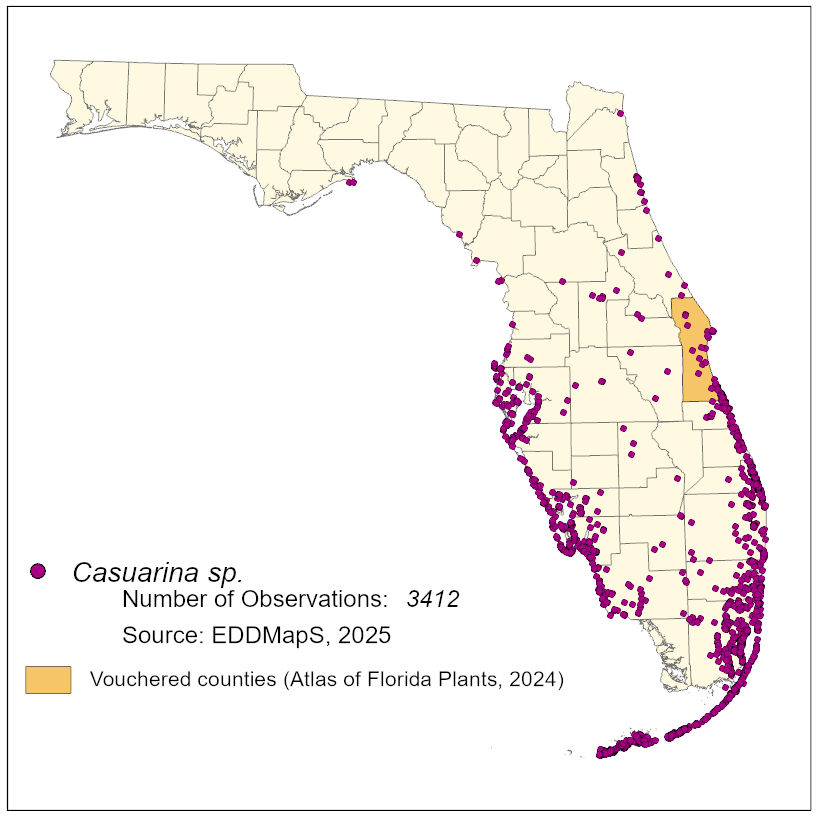Common Name: Australian pine
Family: Casuarinaceae
Common Synonyms: none
USDA Hardiness Zone: 11-10
Growth Habit: Tree
Origin: Australia
FISC Category: 1,2
FDACS Listed Noxious Weed: Yes
Introduction Date: late 1800's
IFAS Assessment:


Evergreen tree to 46 m tall either suckering (C. glauca) or not suckering (C. equisetifolia and C. cunninghamiana). Bark initially smooth but developing scaly strips with maturity. Branchlets pine-needle-like, green or grayish-green, jointed to 20 cm long. Leaves reduced to tiny scales at branchlet joints (6-8 in C. equisetifolia, 10-17 in C. glauca, and 8-10 in C. cunninghamiana). Flowers unisexual (male and female on different plants). Woody cone-like fruiting heads composed of many 1-seeded winged nutlets small, brown to 2 cm.C. equisetifolia is a single-trunked species, seeds dispersed by wind and birds, C. glauca spreads by suckering at the base, rarely sets seed in Florida, C. cunninghamiana is much less common in Florida than the other two species.
Coastal uplands, pine rocklands, disturbed sites
Casuarina isn't often identified to species, but the genus is established in south and central zones.

NA
Langeland, K.A., H.M. Cherry, C.M. McCormick, K.C. Burks. 2008. Identification and Biology of Non-Native Plants in Florida's Natural Areas-Second Edition. IFAS Publication SP 257. University of Florida, Gainesville, Florida.
Virginia Tech. 2013. vTREE: Australian Pine. http://dendro.cnre.vt.edu/dendrology/syllabus/factsheet.cfm?ID=380. Accessed on December 3, 2013.